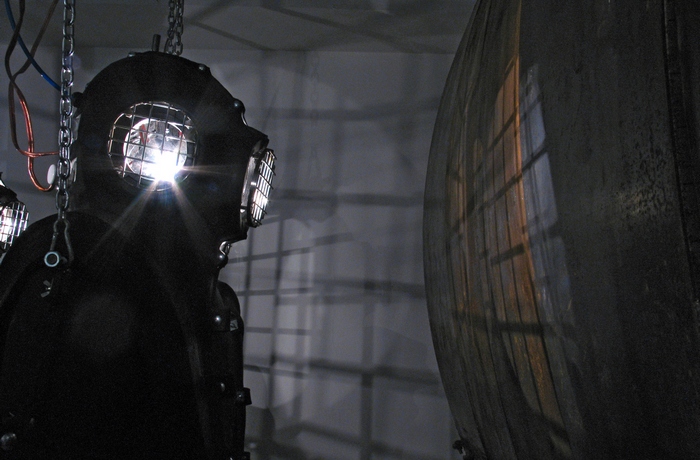
The nuclear submarine Kursk of the Antey class (949A) armed with nuclear missiles was the world’s largest combat submarine and one of the most sophisticated vessels of the Northern Fleet of the Russian Navy. On 12th August 2000 at 11.30, during a naval exercise in the Barents Sea, two explosions of on-board torpedoes immediately killed most members of the one-hundred-and-eighteen-strong crew, and the heavily damaged vessel sank to the sea bottom at a depth of 108 metres. Twenty-three sailors survived the fatal accident by escaping to the ninth, rearmost compartment of the submarine, where under the most terrifying conditions of complete darkness, ice-cold water polluted by fumes from fuel and oils and the permanently worsening quality of the stale air, they waited for rescue by an evacuation mini-submarine. The whole world watched live and direct through the media the progress of rescue work accompanied by evident disagreements within the Russian military and political hierarchy between those who wanted to expedite accepting foreign aid and the hardliners who rejected it. Before the Russian regime, which did not have the necessary rescue resources, finally decided to ask for help, it was too late – when on 21st August Russian and Norwegian divers reached the submarine, it was obvious that no one could have survived.
Markus Copper’s installation metaphorically and mimetically invokes the hours of the surviving sailors of The Kursk waiting in vain for rescue and the tragedy of their agony. By engaging the viewer’s sensory perception and emotions it underpins deeply existential human themes, which accompany such a critical situation: hope and hopelessness, fear, race against time, waiting for rescue/death, heroism and personal sacrifice. It is also an original comment on the subject of technology failure, the destruction of a perfect machine, which in its throes kills the crew as well. The work, however, can also be rightfully approached as an artistic memorial to the brave sailors of The Kursk, victims of an unfortunate accident, as well as malicious military-political bureaucracy which does not hesitate to sacrifice human life in the name of preserving dubious prestige and keeping a military secret. The steel walls of the former gasometer provide an echoing environment and enhance the impression from the installation and its impact. The implied contexts of the work, which touch on the Russian military threat, have become unexpectedly relevant in connection with the most recent aggressive escapades of the Putin regime.
Ladislav Kesner
Markus Copper *1968
– is a Finnish sculptor and multi-media artist, one of the outstanding figures of contemporary Scandinavian art. His massive sculptures (biomechanical, visually-sonic structures) typically combine real-world objects with mixed materials – steel, wood and rubber, the parts of which move and produce various light effects and loud sounds. Copper’s most significant works (apart from The Kursk, for example, The Archangel of the Seven Seas, The Rose Garden and The Whaling Station) assume the appearance of fantastic animated machines, which attack directly and piercingly the viewer’s senses, and which occasionally hint at historical events or phenomena, in particular where the main part was played by a failure or abuse of technology and the sea (the plight of MS Estonia, minefields from WWII).
